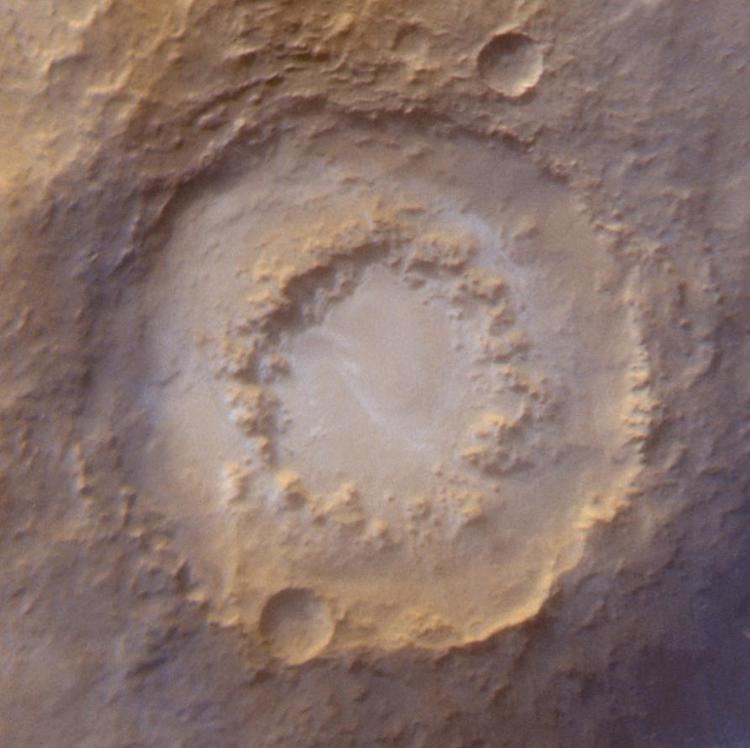Planet Mars | Diameter 203.0 km | |
 | ||
Lowell is a crater in Aonia Terra, Thaumasia quadrangle, Mars. Lowell crater has a ring of mountains on its floor which gives it a sort of bull's eye appearance.
Nearby features include the craters Slipher to the north and Coblentz to the southwest, the small mountain Aonia Mons to the west, and Aonia Planum to the southeast.
The crater was named after Percival Lowell who build the Lowell Observatory in Flagstaff Arizona in 1894. He used the observatory to discover over 500 canals on Mars. Lowell promoted the idea that they were constructed by an intelligent race. However, when pictures were received from spacecraft, the canals were found to be illusions. Nevertheless, much of the later interest in Mars exploration resulted from the efforts of Percival Lowell.
Why are Craters important?
The density of impact craters is used to determine the surface ages of Mars and other solar system bodies. The older the surface, the more craters present. Crater shapes can reveal the presence of ground ice.
The area around craters may be rich in minerals. On Mars, heat from the impact melts ice in the ground. Water from the melting ice dissolves minerals, and then deposits them in cracks or faults that were produced with the impact. This process, called hydrothermal alteration, is a major way in which ore deposits are produced. The area around Martian craters may be rich in useful ores for the future colonization of Mars.
